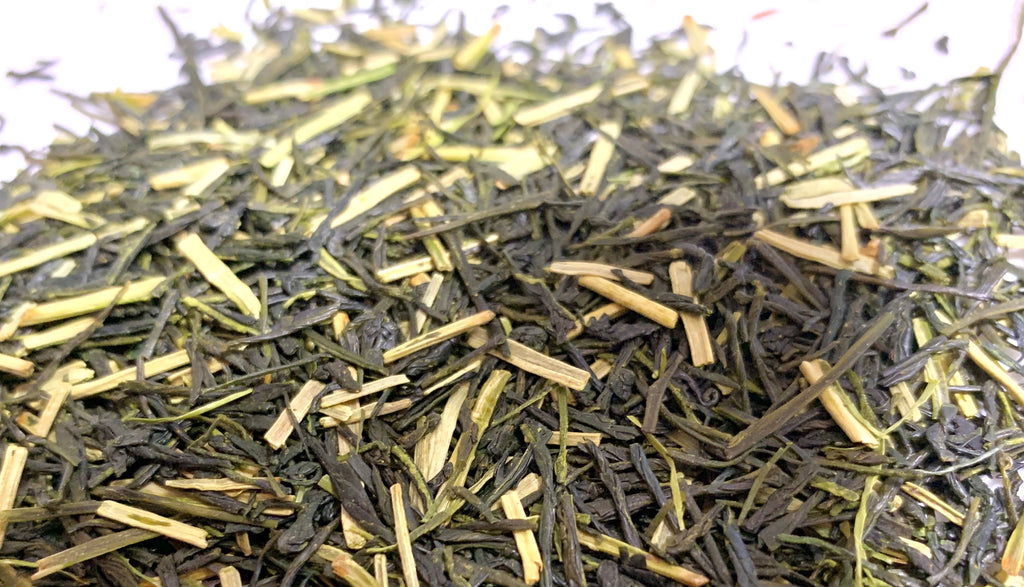As the name implies, kukicha (stem tea or twig tea) is mainly made from the stem portion of tea. It is a well-known fact that tea leaves contain caffeine. So what about the stem?
1. The stem contains caffeine
From the conclusion, caffeine is also present in the stem. Although less than leaves, it contains about one-third of caffeine, in most cases. Also, the stem part is harder than the leaf part, and it makes the less amount of component elutes than leaves. With such physical characteristic, it can be said that Kukicha has a lower amount of caffeine per cup than the regular tea leaves like Sencha.
2. Back to basics, what is kukicha?
Usually, tea leaves and stems are harvested together and put them in the same bag together. In this early stage, tea with such mixed leaves and stems is called "Aracha". The Aracha is then finely processed by the tea producers or tea wholesalers. This secondary processing is called "refining", and refined Aracha is called “Shiagecha” (refined tea). This refined tea is the final product, so most of the tea products sold on the market are refined tea. (Recently some people like drinking Aracha, as it has very natural and distinct flavor, so we sometimes see Aracha is sold in the tea shops in Japan though.) In this refining process, leaves and stems are separated, and the stems that come out at that time becomes Kukicha.
So, actually, Kukicha is a kind of rare tea, since it is the by-product produced only when tea leaves are going through refining process, and it is not possible to make Kukicha alone.
Also, just as there are various types of tea such as “Sencha” , “Gyokuro” and “Bancha”, there are various types of Kukicha such as Kukicha from Sencha, Kukicha from Gyokuro and Kukicha from Bancha.
Of course, Kukicha from Sencha represents the flavor of the original Sencha. Also Kukicha from Gyokuro remains the note of the original Gyokuro . However, regardless of the origin, Kukicha has it’s own clear taste and refreshing scent.
Conclusion:
Caffeine exists in Kukicha , the amount is lower than Sencha or Gyokuro leaves though. Kukicha may be the best option if you like Sencha or Gyokuro , but want to reduce caffeine intake, such as in the afternoon. Or caffeine can be lowered further by brewing Kukicha in cold water. Lower caffeine content than Sencha or Gyokuro gives less bitterness, since the caffeine is the source of bitterness. You can enjoy refreshing Kukicha flavor with much lower caffeine intake with much less bitterness flavor by brewing cold.

